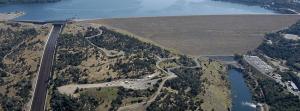February 2017
Long-term impact of climate change on US cities is rising, UCI researchers find
Global climate change is being felt in many coastal communities of the United States, not always in the form of big weather disasters but as a steady drip, drip, drip of nuisance flooding.
According to researchers at the University of California, Irvine, rising sea levels will cause these smaller events to become increasingly frequent in the future, and the cumulative effect will be comparable to extreme events such as Hurricane Katrina or Superstorm Sandy.
“Catastrophic storms get a lot of media attention and are studied, but we wanted to know more about the non-extreme events,” said Amir AghaKouchak, UCI associate professor of civil & environmental engineering and co-author of a new study on cumulative hazards in the American Geophysical Union journal Earth’s Future.
“These diffuse floods happen multiple times a month or year,” he said. “They don’t kill anyone, they don’t damage buildings, but over time they have extremely high-cost outcomes, and it happens without us realizing it.”
Lead author Hamed Moftakhari, a UCI postdoctoral scholar, said that people in often-hit regions have begun the process of adapting to the problem. “In a recent social science survey, people weren’t really interested in knowing the depth of the water. They just wanted to know how long they would be flooded,” he said. “Their main concern was finding out when they could get back to their schools and businesses.”
But public officials can’t afford to take cumulative hazards in stride, said co-author Richard Matthew, UCI professor of planning, policy & design. Policymakers faced with limited capital funds frequently defer action or make incremental improvements when major investments may be critical to fortify their communities. The team created a cumulative hazards index to pinpoint which locations would experience the greatest long-term risk.









